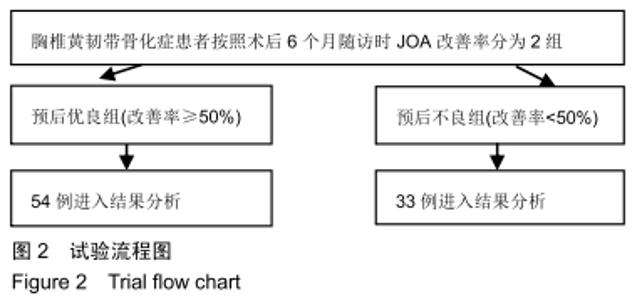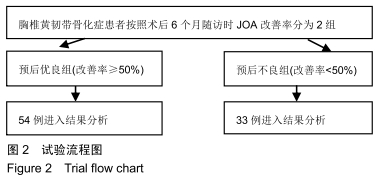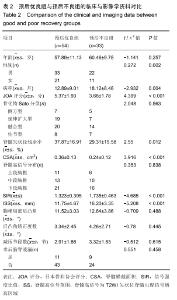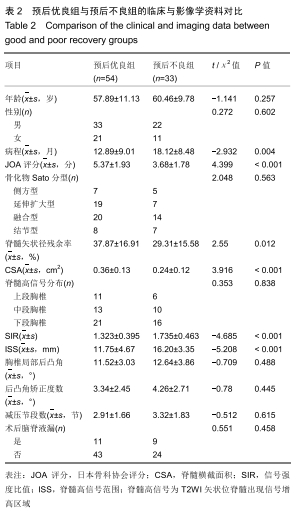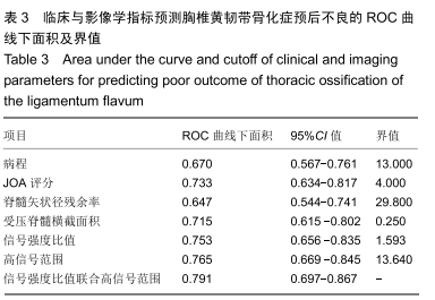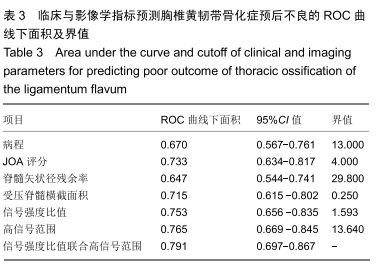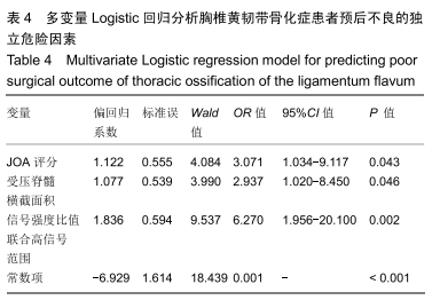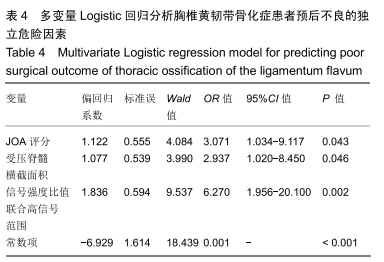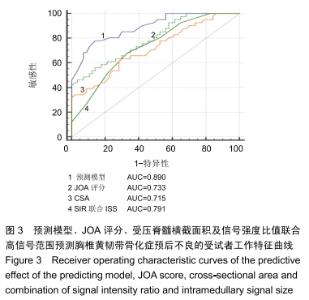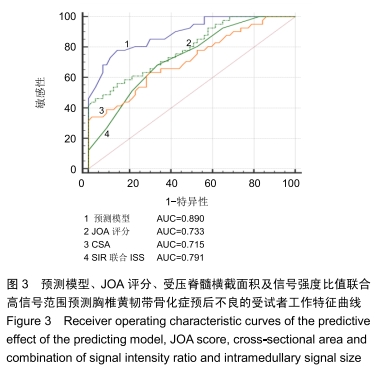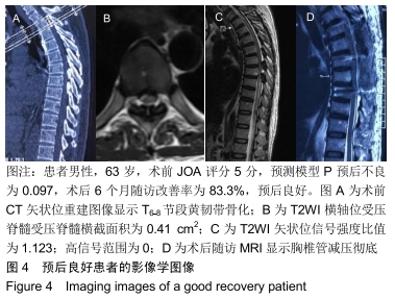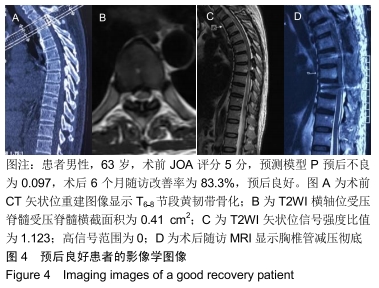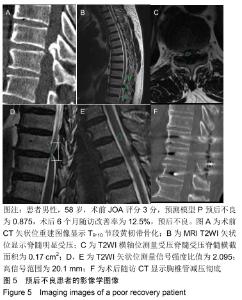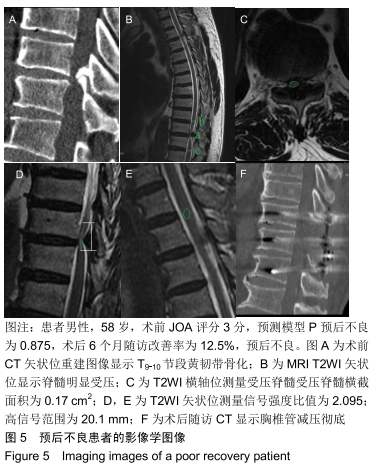[1] WANG H, WEI F, LONG H, et al. Surgical outcome of thoracic myelopathy caused by ossification of ligamentum flavum. J Clin Neurosci. 2017;45:83-88.
[2] HOU X, SUN C, LIU X, et al. Clinical features of thoracic spinal stenosis-associated myelopathy: a retrospective analysis of 427 cases. Clin Spine Surg. 2016;29(2):86-89.
[3] KIM S, HA KY, LEE JW, et al. Prevalence and related clinical factors of thoracic ossification of the ligamentum flavum-a computed tomography-based cross-sectional study. Spine J. 2018;18(4):551-557.
[4] YAN C, JIA HC, XU JX, et al. Computer-based 3D simulations to formulate preoperative planning of bridge crane technique for thoracic ossification of the ligamentum flavum. Med Sci Monit. 2019;25: 9666-9678.
[5] HE S, HUSSAIN N, LI S, et al. Clinical and prognostic analysis of ossified ligamentum flavum in a Chinese population. J Neurosurg Spine. 2005;3(5):348-354.
[6] SANGHVI AV, CHHABRA HS, MASCARENHAS AA, et al. Thoracic myelopathy due to ossification of ligamentum flavum: a retrospective analysis of predictors of surgical outcome and factors affecting preoperative neurological status. Eur Spine J. 2011;20(2):205-215.
[7] KAWAGUCHI Y, YASUDA T, SEKI S, et al. Variables affecting postsurgical prognosis of thoracic myelopathy caused by ossification of the ligamentum flavum. Spine J. 2013;13(9):1095-1107.
[8] NOURI A, MARTIN AR, MIKULIS D, et al. Magnetic resonance imaging assessment of degenerative cervical myelopathy: a review of structural changes and measurement techniques. Neurosurg Focus. 2016;40(6):E5.
[9] LI XY, LU SB, SUN XY, et al. Clinical and magnetic resonance imaging predictors of the surgical outcomes of patients with cervical spondylotic myelopathy. Clin Neurol Neurosurg. 2018;174:137-143.
[10] LEE J, SATKUNENDRARAJAH K, FEHLINGS MG. Development and characterization of a novel rat model of cervical spondylotic myelopathy: the impact of chronic cord compression on clinical, neuroanatomical, and neurophysiological outcomes. J Neurotrauma. 2012;29(5):1012-1027.
[11] KARPOVA A, ARUN R, KALSI-RYAN S, et al. Do quantitative magnetic resonance imaging parameters correlate with the clinical presentation and functional outcomes after surgery in cervical spondylotic myelopathy? A prospective multicenter study. Spine (Phila Pa 1976). 2014;39(18):1488-1497.
[12] OKADA Y, IKATA T, YAMADA H, et al. Magnetic resonance imaging study on the results of surgery for cervical compression myelopathy. Spine (Phila Pa 1976). 1993;18(14):2024-2029.
[13] KUH SU, KIM YS, CHO YE, et al. Contributing factors affecting the prognosis surgical outcome for thoracic OLF. Eur Spine J. 2006;15(4):485-491.
[14] YU S, WU D, LI F, HOU T. Surgical results and prognostic factors for thoracic myelopathy caused by ossification of ligamentum flavum: posterior surgery by laminectomy. Acta Neurochir (Wien). 2013;155(7):1169-1177.
[15] ANDO K, IMAGAMA S, ITO Z, et al. Predictive factors for a poor surgical outcome with thoracic ossification of the ligamentum flavum by multivariate analysis: a multicenter study. Spine (Phila Pa 1976). 2013;38(12):E748-E754.
[16] WU D, WANG H, HU P, et al. The postoperative prognosis of thoracic ossification of the ligamentum flavum can be described by a novel method: the thoracic ossification of the ligamentum flavum score. World Neurosurg. 2019;130:e47-e53.
[17] ZHANG J, WANG L, LI J, et al. Predictors of surgical outcome in thoracic ossification of the ligamentum flavum: focusing on the quantitative signal intensity. Sci Rep. 2016;6:23019.
[18] TANG CYK, CHEUNG JPY, SAMARTZIS D, et al. Predictive factors for neurological deterioration after surgical decompression for thoracic ossified yellow ligament. Eur Spine J. 2017;26(10):2598-2605.
[19] SATO T, KOKUBUN S, TANAKA Y, et al. Thoracic myelopathy in the Japanese: epidemiological and clinical observations on the cases in Miyagi Prefecture. Tohoku J Exp Med. 1998;184(1):1-11.
[20] 孙垂国,陈仲强,李危石,等.后路椎管后壁切除、局限性后纵韧带骨化块切除联合去后凸治疗胸椎多节段后纵韧带骨化症[J].中华骨科杂志,2015, 35(1):6-10.
[21] 任红伟,李磊.后路减压内固定手术治疗胸椎黄韧带骨化症的预后影响因素分析[J].颈腰痛杂志,2019,40(2):153-156.
[22] 庞巨涛,张新虎,孙建华, 等.经皮球囊扩张椎体后凸成形后椎体再骨折的危险:回顾性多因素分析[J].中国组织工程研究,2019,23(8):1182-1187.
[23] 王哲,朱超,罗卓荆.胸椎管狭窄症的手术策略[J].中华骨科杂志, 2015, 35(1):76-82.
[24] SHIOKAWA K, HANAKITA J, SUWA H, et al. Clinical analysis and prognostic study of ossified ligamentum flavum of the thoracic spine. J Neurosurg. 2001;94(2 Suppl):221-226.
[25] AIZAWA T, SATO T, SASAKI H, et al. Thoracic myelopathy caused by ossification of the ligamentum flavum: clinical features and surgical results in the Japanese population. J Neurosurg Spine. 2006;5(6):514-519.
[26] HUR H, LEE JK, LEE JH, et al. Thoracic myelopathy caused by ossification of the ligamentum flavum. J Korean Neurosurg Soc. 2009;46(3):189-194.
[27] LIAO CC, CHEN TY, JUNG SM, et al. Surgical experience with symptomatic thoracic ossification of the ligamentum flavum. J Neurosurg Spine. 2005;2(1):34-39.
[28] AHN DK, LEE S, MOON SH, et al. Ossification of the ligamentum flavum. Asian Spine J. 2014;8(1):89-96.
[29] MEHALIC TF, PEZZUTI RT, APPLEBAUM BI. Magnetic resonance imaging and cervical spondylotic myelopathy. Neurosurgery. 1990; 26(2):217-227.
[30] YUKAWA Y, KATO F, YOSHIHARA H, et al. MR T2 image classification in cervical compression myelopathy: predictor of surgical outcomes. Spine (Phila Pa 1976). 2007;32(15):1675-1679.
[31] SARKAR S, TUREL MK, JACOB KS, et al. The evolution of T2-weighted intramedullary signal changes following ventral decompressive surgery for cervical spondylotic myelopathy. Neurosurg Spine. 2014;21(4):538-546.
|
